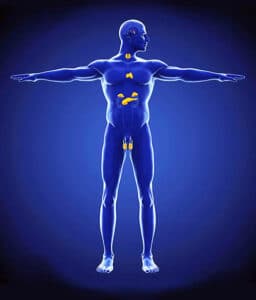Is chocolate healthy or unhealthy?
Chocolate is one of those products that is classified both as a healthy superfood and as one of the causes of obesity.
The problem is that when writing and talking about chocolate, it is common to mention only certain facts taken out of context. And we do know that everything has its positive and negative sides.
So, let’s try to clarify whether chocolate is healthy or not healthy.
But first things first.
The Road of Chocolate to Europe
Today, by the word “chocolate” we mean a bar of chocolate, which we associate with the words “sweet” and “eat”. However, this was not always the case – until the middle of the 19th century, chocolate was only in the form of a drink, and sugar was added to it only in the 16th century when this drink appeared in Europe.
Chocolate (cocoa) has been used as food since at least the 19th century BC – in the form of various chocolate drinks.
Until the 16th century, no one in Europe had even heard of chocolate or cocoa. Christopher Columbus first encountered cocoa beans during his fourth trip to America – on August 15, 1502, when his crew stole a large canoe from local Indians, which, among other things, contained cocoa beans.
Columbus brought them to Spain, and although at first, this drink did not receive recognition after Spain conquered the country of the Atcheks, the drink became very popular at the Spanish court.
To reduce the natural bitterness of chocolate, sugar, honey, or vanilla were added to it (which was also imported from America).
From Spain, chocolate traveled to Austria (around 1602) and by the end of the 17th century became a super trendy drink throughout Europe. It was believed that it had nutritional, medicinal, and even aphrodisiac properties (there were rumors that Casanova was a big fan of chocolate).
Making chocolate
Chocolate is made from the fruits (pods) of cocoa trees. Each pod contains from 20 to 60 cocoa beans. To obtain cocoa, the beans are fermented, dried, roasted, and ground. The result is a liquid paste-like mass.
When chocolate first appeared in Europe, it was a luxury that only the rich could enjoy.
In 1815, the Dutch chemist Coenraad van Houten discovered a way to process cocoa beans to obtain powdered chocolate. The process became known as “Dutch processing”, and the resulting chocolate was called cocoa powder or “Dutch cocoa”.
In 1828, Coenraad van Houten created a press with which about half of the natural fat (cocoa butter) could be separated from the liquid chocolate mass. Chocolate production has become much cheaper, and its quality has become more consistent.
Both Dutch processing and the chocolate press have helped make chocolate accessible to everyone – opening the door to mass production of chocolate.
The inventor of the first edible chocolate (chocolate bar) is Joseph Fry, who in 1847 discovered a method for producing mouldable chocolate mass (by adding melted cocoa butter to Dutch cocoa).
About two-thirds of the world’s cocoa is produced in West Africa. Côte d’Ivoire is the largest producer of cocoa (total yield around 2 200 000 tonnes). The next largest cocoa-producing countries are Ghana, Indonesia, Nigeria, Ecuador, and Cameroon.
Chocolate and health
When we talk about the “healthiness” of chocolate, we are actually talking about what cocoa gives us:
- Cocoa is a concentrated source of flavonoids (natural antioxidants, plant compounds that help fight diseases);
- Cocoa products in Western countries are the main source of flavonoids (other sources: berries, green and black tea, green leafy vegetables, citrus fruits, and red wine).
With that in mind, here are some of the possible health benefits of chocolate:
- Cocoa can help lower blood pressure, as flavonoids are likely to alter the production of inflammatory modulators and dilate blood vessels — similar to omega-3 fatty acids;
- Cocoa can improve the cholesterol profile – flavonoids can reduce LDL (“bad”) cholesterol and raise HDL (“good”) cholesterol;
- Chocolate can increase serotonin levels. Carbohydrate-containing foods such as chocolate can cause increased serotonin production. Serotonin is a neurotransmitter that promotes well-being. This is one of the reasons why eating chocolate improves mood (and also that the theobromine and caffeine contained in cocoa produce a mildly stimulating effect).
Not all chocolates are created equal
Cocoa products are very diverse, both in terms of the amount of cocoa in them and in the type of processing, for example:
- Unsweetened chocolate is produced from 100% cocoa mass;
- Dark chocolate (containing at least 70 percent cocoa) is high in flavonoids and relatively low in sugar;
- Milk chocolate is produced from cocoa mass (at least 10%) to which milk is added – in the form of milk powder, liquid milk, or condensed milk. It also has more sugar than dark chocolate;
- White chocolate is made from cocoa butter (at least 20%), milk, and sugar. It contains no cocoa and therefore no cocoa “goodies”.
Comparison of nutrients in 50 grams of chocolate depending on its cocoa content.
| 100% Cocoa | 85% cocoa | 70% Cocoa | Snickers |
Kcal | 250 | 260 | 275 | 282 |
Protein | 7 g | 5 g | 3.75 g | 4 g |
Carbohydrates | 13 g | 10 g | 16.25 g | 35 g |
of which sugar | 0.5 g | 6.25 g | 13.75 g | 30 g |
Fibre | 8 g | 3.75 g | 2.5 g | 1 g |
Fat | 24 g | 22.5 g | 21.25 g | 14 g |
As you can see – the higher the degree of processing of chocolate, the more carbohydrates (sugar) and less fiber, protein, and fat it contains.
Cocoa is a highly concentrated source of nutrients, providing us with carbohydrates, fats, and proteins, as well as antioxidants and minerals such as calcium, iron, zinc, magnesium, copper, potassium, and sodium. The theobromine and caffeine in chocolate (cocoa) have a mildly stimulating effect. Chocolate’s (cocoa) carbohydrates and easily digestible fats make it an excellent high-energy food.
But.
Remember that we are still talking about cocoa, and the less it is contained in chocolate, the less benefit you get from eating it (fewer antioxidants, fiber, minerals …), but more sugar (calories) and synthetic food additives (emulsifiers, stabilizers, flavor enhancers, etc.).
How to choose the healthiest chocolate
As I mentioned – chocolates are different. Chocolate can be both healthy and unhealthy, depending on its composition and processing methods.
Here are some tips to help you choose the healthiest version:
- Read the composition of the chocolate on the label:
- The more cocoa, the better (chocolate liquor or cocoa);
- The fewer ingredients, the better;
- The less sugar, the better;
- Chocolate is often flavoured with spices, extracts, and oils to improve its taste. Unfortunately, it is difficult to distinguish natural flavours from artificial flavours on the chocolate label, but the fewer of them, the better;
- Do not buy chocolate containing trans fats (hydrogenated or partially hydrogenated fats/oil).
- Avoid chocolate made using “Dutch processing”. This method involves processing cocoa with alkali (used to change the colour of chocolate and reduce the bitter taste. It is listed as “Alkalized cocoa”, “Dutch-processed cocoa”, or “Processed with alkali” on the chocolate label).
Key takeaways
Chocolate has become an integral part of our lives. It is not only a treat but also our “friend” when we feel great and in moments of sadness. Chocolate has been a part of our lives for as long as we can remember.
Chocolate is rich in carbohydrates – so it is an excellent source of quick energy. Chocolate also contains small amounts of stimulating alkaloids – theobromine and caffeine.
Remember that although 100% pure cocoa contains more nutrients than, for example, candy, it still has a lot of calories.
Therefore – enjoy chocolate in moderation.
Most studies show that the greatest health benefits are achieved when consuming 10 to 30 grams of chocolate per day.
If 10 to 30 grams of chocolate per day is not enough for you – look for other sources of pleasure that increase the level of serotonin, for example – exercise or massages, spending more time in the company of pleasant people, watching comedies, etc.
In short – enjoy life!
Cacao use and the San Lorenzo Olmec
The Natural History of Chocolate
The neuroprotective effects of cocoa flavanol and its influence on cognitive performance
Cocoa and Chocolate in Human Health and Disease
Chocolate consumption is inversely associated with prevalent coronary heart disease
Cocoa intake, blood pressure, and cardiovascular mortality
The effect of flavanol-rich cocoa on the fMRI response to a cognitive task in healthy young people
Impact of cocoa flavanols on human health
Effect of Cocoa and Cocoa Products on Cognitive Performance in Young Adults
Methylxanthines are the psycho-pharmacologically active constituents of chocolate
Cocoa, Blood Pressure, and Vascular Function
Chocolate Consumption and Risk of Coronary Heart Disease, Stroke, and Diabetes
A Prospective Study of Trans Fatty Acids in Erythrocytes and Risk of Coronary Heart Disease
Dietary fat intake and risk of coronary heart disease in women
Impact of alkalization on the antioxidant and flavanol content of commercial cocoa powders

Help to maintain this site, create interesting articles and delicious low-calorie recipes!
Share this article
Follow me on Facebook
I recommend reading these articles as well

Hormones - what are they, and what do they do?
Kā hormoni ietekmē mūsu organismu – mūsu veselību un izskatu? Kas ir hormonu disbalanss, kādas ir tā pazīmes un kā ar to cīnīties?

Sugar substitutes
The sugar substitutes discussed in this article are good alternatives for people who are not advised to use sugar due to illness or being overweight. The key word here is alternatives, which means that they should be used instead of refined sugar - and in moderation.

How to reduce edema, why drink so much water and why?
Many face a problem such as edema. So what really causes edema and why do you need to drink water to reduce it?

Why skipping meals and starving do not lead to weight loss?
Why eating less and starving yourself is more likely to make you gain weight than lose it?

